Forum on trading, automated trading systems and testing trading strategies
Something Interesting to Read September 2014
newdigital, 2014.09.29 09:10
Mastering the Trade, Second Edition: Proven Techniques for Profiting from Intraday and Swing Trading Setupsby John F. Carter

There are 2nd editions of the book, which is basically a
revision of the original version. John has added more content as well
as updated previous trading concepts as they apply to current day
market conditions.
Mastering the Trade has a lot of focus on futures trading, and this book has something for every trader, regardless of experience or knowledge. Reading this book will not necessarily make you an instant success, but reading a book on how to hit a golf ball from Tiger Woods doesn't mean you'll be on tour with a winning streak next year either.
Forum on trading, automated trading systems and testing trading strategies
Something Interesting to Read August 2014
matfx, 2014.08.05 14:40
A Three Dimensional Approach To Forex Trading : Anna Coulling
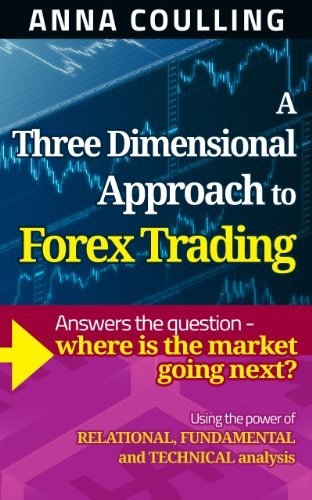
If you aspire to becoming a full time forex trader, then this is the book for you. Even if your dream is perhaps more modest, and you simply want to have a second income trading the forex markets, then again, this book is for you. It has been written with one clear objective in mind. To explain how and why currencies move in the way that they do, using the combined power of relational, technical and fundamental analysis. Combine this with a three dimensional approach to trading itself, using multiple time frames and multiple chart analysis, and the world of foreign exchange will become crystal clear. Many aspiring traders, simply do not realize that the forex market sits at the heart of the financial world, which, when you think about it logically, is really common sense. After all, this is the biggest money market in the world, and if the financial markets are about one thing, they are about money. Making it, protecting it, or increasing the return. It’s no surprise therefore, that the forex market connects all the others. It is the central axis of the financial world, around which all the others spin. In the book, you will discover how changes in market sentiment in the primary markets of commodities, stocks, bonds and equities, are then reflected in the currency markets. This is something which often surprises novice traders. After all, why look at a stock index, or the price of gold, or a bond market? The answer is very simple. It is in these markets where you will find all the clues and signals, which then reveal money flow. After all, the financial markets are all about risk. In other words, higher returns for higher risk, or lower returns for lower risk. It really is that simple. And yet, how many forex traders ever consider associated markets. The answer is very few. You will be one of those enlightened traders who truly understands money flow and risk, and your confidence as a trader will grow exponentially as a result. And in case you were wondering, this is NOT another book explaining forex trading strategies. In fact there are none at all, surprising given the book's length. If this is what you are looking for, please DO NOT buy this book. It has been written for two specific audiences. The first is the novice forex trader, for whom this is a new market. The second is the forex trader who has attempted to trade in foreign exchange, but failed, and has been left confused by the apparent random and chaotic behavior of this volatile market. Reading this book will provide you with a deep understanding of how and why the markets move in the way they do. Whilst the forex market is a complex mix, it is not complicated, once you understand the people, their motives and the currencies themselves. Each chapter builds on the last in a logical sequence, and every topic is explained in a simple and clear way. Even those markets such as bonds, which few traders ever understand, are explained very simply. Every topic is illustrated with clearly annotated charts, to help and guide you as you learn. Equally important is the concept of change. Indeed you may have other books on your bookshelf written many years ago and explaining how the forex market works. Well, as you will discover, the rule book has been torn up. No longer is this a simple market of trending currency pairs. This all changed in the financial tsunami which engulfed the world in 2007/2008, and with it the forex world changed too! If this is news to you, then yet another reason to buy the book. Long gone are the days when currency pairs meandered their way higher and lower in long term trends, driven by interest rate differentials. To take advantage, you need to understand the forces which now drive the markets. A Three Dimensional Approach To Forex Trading will empower you with knowledge. Knowledge and confidence go hand in hand. Confidence breeds success, and success breeds money, which will then flow from reading the book - Anna
New Book - Open Secret of Libor Manipulation

Open Secret: The Global Banking Conspiracy That Swindled Investors Out of Billions is the new book written by Erin Arvedlund.
The book goes behind the scenes of the elite firms that trafficked in LiBOR based products, including Barclays Capital, UBS, Rabobank, and Citigroup to show the negative impact they had on both ordinary investors and borrowers.
Erin’s claim to fame was a column she wrote in Barron’s in the early 2000s outing Bernie Madoff as a fraud. It was a national bestseller titled Too Good to Be True.

- ritholtz.com
The Shifts and the Shocks: What We’ve Learned - and Have Still to Learn - from the Financial Crisis
by
Martin Wolf
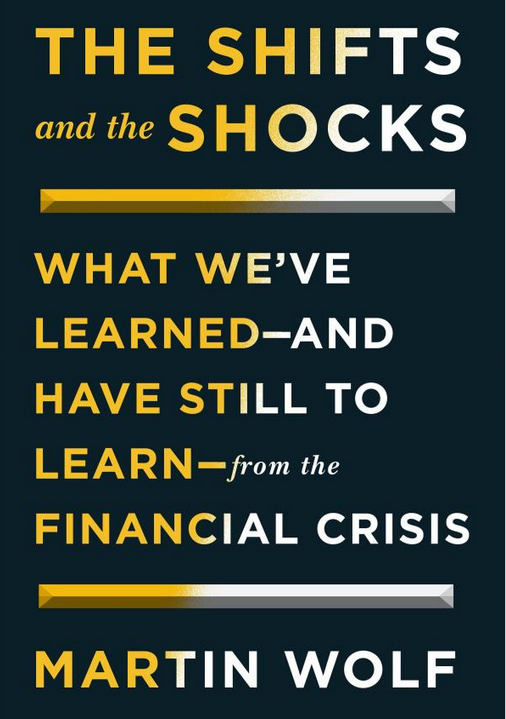
From the chief economic commentator for the Financial Times, a brilliant tour d’horizon of the new global economy and its trajectory
There have been many books that have sought to explain the causes and
courses of the financial and economic crisis which began in 2007–8. The Shifts and the Shocks
is not another detailed history of the crisis, but the most persuasive
and complete account yet published of what the crisis should teach us
about modern economies and economics.
The book identifies the
origin of the crisis in the complex interaction between globalization,
hugely destabilizing global imbalances and our dangerously fragile
financial system. In the eurozone, these sources of instability were
multiplied by the tragically defective architecture of the monetary
union. It also shows how much of the orthodoxy that shaped monetary and
financial policy before the crisis occurred was complacent and wrong. In
doing so, it mercilessly reveals the failures of the financial,
political and intellectual elites who ran the system.
The book
also examines what has been done to reform the financial and monetary
systems since the worst of the crisis passed. “Are we now on a
sustainable course?” Wolf asks. “The answer is no.” He explains with
great clarity why “further crises seem certain” and why the management
of the eurozone in particular “guarantees a huge political crisis at
some point in the future.” Wolf provides far more ambitious and
comprehensive plans for reform than any currently being implemented.
Written with all the intellectual command and trenchant judgment that
have made Martin Wolf one of the world’s most influential economic
commentators, The Shifts and the Shocks matches impressive
analysis with no-holds-barred criticism and persuasive prescription for a
more stable future. It is a book no one with an interest in global
affairs
Forum on trading, automated trading systems and testing trading strategies
Something Interesting to Read February 2014
newdigital, 2014.02.04 15:21
Trading Price Action Reversals : Al Brooks
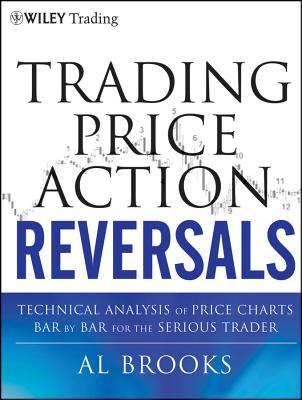
detailed guide to profiting from trend reversals using the technical analysis of price action
The key to being a successful trader is finding a system that works and
sticking with it. Author Al Brooks has done just that. By simplifying
his trading system and trading only 5-minute price charts he's found a
way to capture profits regardless of market direction or economic
climate. His first book, Reading Price Charts Bar by Bar, offered an
informative examination of his system, but it didn't allow him to get
into the real nuts and bolts of the approach. Now, with this new series
of books, Brooks takes you step by step through the entire process.
By breaking down his trading system into its simplest pieces:
institutional piggybacking or trend trading, trading ranges, and
transitions or reversals (the focus of this book), this three book
series offers access to Brooks' successful methodology. Trading Price
Action Reversals reveals the various types of reversals found in today's
markets and then takes the time to discuss the specific characteristics
of these reversals, so that you can use them in your everyday trading
endeavors. While price action analysis works on all time frames, there
are different techniques that you can use in trading intraday, daily,
weekly and monthly charts. This, among many other issues, is also
addressed throughout these pages.
- Offers insights on how to handle volatility and sharp reversals
- Covers the concept of using options when trading certain charts
-
Examines how to deal with the emotions that come along with trading
Other books in the series include Trading Price Action Trends and Trading Price Action Trading Ranges
If you're looking to make the most of your time in today's markets the
trading insights found in Trading Price Action Reversals will help you
achieve this goal.
================
Forum on trading, automated trading systems and testing trading strategies
Something Interesting to Read February 2014
newdigital, 2014.02.10 16:20
Trading Price Action Trading Ranges : Al Brooks
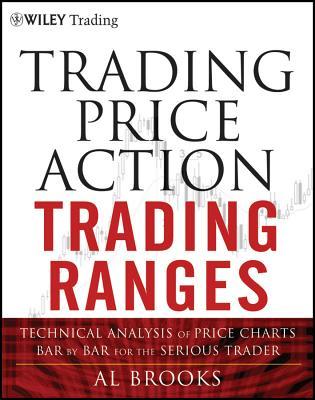
Divided into five comprehensive parts, Trading Price Action Trading
Ranges skillfully addresses how to spot and profit from trading
ranges—which most markets are in, most of the time—using the technical
analysis of price action. Along the way, it touches on some of the most
essential aspects of this approach, including:
- Trading breakouts, which are transitions from trading ranges to trends, and understanding the gaps they create
- The two types of "Magnets," Support and Resistance, and what they mean once the market breaks out and begins its move
- Pullbacks, which are transitions from trends to trading ranges
- The characteristics commonly found in trading ranges—areas of largely sideways price activity—and examples of how to trade them
-
Honing your order and trade management skills so that you can make more informed entry and exit decisions
And much more
Throughout the book, Brooks focuses primarily on 5 minute candle
charts—all of which are created with TradeStation—to illustrate basic
principles, but also discusses daily and weekly charts. And since he
trades more than just E-mini S&P 500 futures, Brooks also details
how price action can be used as the basis for trading stocks, forex,
Treasury Note futures, and options. For your convenience, a companion
website, which can be found atwiley.com/go/tradingtrends, contains all
of the charts provided in the book.
=============
Check the other book from this series : Trading Price Action Reversals : Al Brooks
By Eric Schmidt and Jonathan Rosenberg

Google Executive Chairman and ex-CEO Eric Schmidt and former SVP of
Products Jonathan Rosenberg came to Google over a decade ago as proven
technology executives. At the time, the company was already well-known
for doing things differently, reflecting the visionary--and frequently
contrarian--principles of founders Larry Page and Sergey Brin. If Eric
and Jonathan were going to succeed, they realized they would have to
relearn everything they thought they knew about management and business.
Today, Google is a global icon that regularly pushes the
boundaries of innovation in a variety of fields. HOW GOOGLE WORKS is an
entertaining, page-turning primer containing lessons that Eric and
Jonathan learned as they helped build the company. The authors explain
how technology has shifted the balance of power from companies to
consumers, and that the only way to succeed in this ever-changing
landscape is to create superior products and attract a new breed of
multifaceted employees whom Eric and Jonathan dub "smart creatives."
Covering topics including corporate culture, strategy, talent,
decision-making, communication, innovation, and dealing with disruption,
the authors illustrate management maxims ("Consensus requires
dissension," "Exile knaves but fight for divas," "Think 10X, not 10%")
with numerous insider anecdotes from Google's history, many of which are
shared here for the first time.
In an era when everything is
speeding up, the best way for businesses to succeed is to attract
smart-creative people and give them an environment where they can thrive
at scale. HOW GOOGLE WORKS explains how to do just that.
Digital Bank: Strategies to launch or become a digital bank

Digital Bank tracks the innovations in banking and how the mobile internet is changing the dynamics of consumer and corporate relationships with their banks. The implication is that banks must become digitised, and that is a challenge as becoming a Digital Bank demands new services focused upon 21st-century technologies. Digital Bank not only includes extensive guidance and background on the digital revolution in banking, but also in-depth analysis of the activities of incumbent banks such as Barclays in the UK and mBank in Poland, as well as new start-ups such as Metro Bank and disruptive new models of banking such as FIDOR Bank in Germany. Add on to these a comprehensive sprinkling of completely new models of finance, such as Zopa and Bitcoin, and you can see that this book is a must-have for anyone involved in the future of business, commerce and banking.

- www.amazon.com
Forum on trading, automated trading systems and testing trading strategies
Something Interesting to Read March 2014
newdigital, 2014.03.21 13:40
The Little Book Of Trading : Michael W. Covel
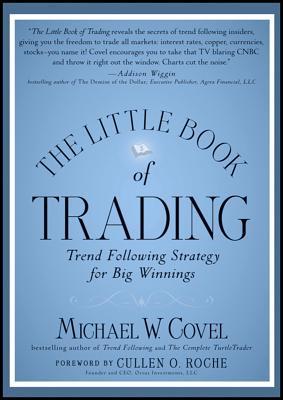
The last decade has left people terrified of even the safest investment
opportunities. This fear is not helping would-be investors who could be
making money if they had a solid plan. The Little Book of Trading
teaches the average person rules and philosophies that winners use to
beat the market, regardless of the financial climate.
The market has always fluctuated, but savvy traders know how to make
money in good times and bad. Drawing on author Michael Covel's own
trading experience, as well as insights from legendary traders, the book
offers sound, practical advice in an easy to understand, readily
digestible way. The Little Book of Trading:
Identifies tools, concepts, psychologies, and philosophies that keep
people protected and making money when the next market bubble or
surprise crisis occurs
Features top traders in each chapter that have beaten the market for
decades, providing readers with their moneymaking knowledge
Shows how traders who beat mutual fund performance make money at different times, not just from stocks alone
Most importantly, The Little Book of Trading explains why mutual funds
should not be the investment vehicle of choice for people looking to
secure retirement, a radical realization highlighting the changed face
of investing today.
- Free trading apps
- Over 8,000 signals for copying
- Economic news for exploring financial markets
You agree to website policy and terms of use
This is the thread about books related for stocks, forex, financial market and economics. Please make a post about books with possible cover image, short description and official link to buy (amazon for example).
Posts without books' presentation, without official link to buy and with refferal links will be deleted.Posts with links to unofficial resellers will be deleted